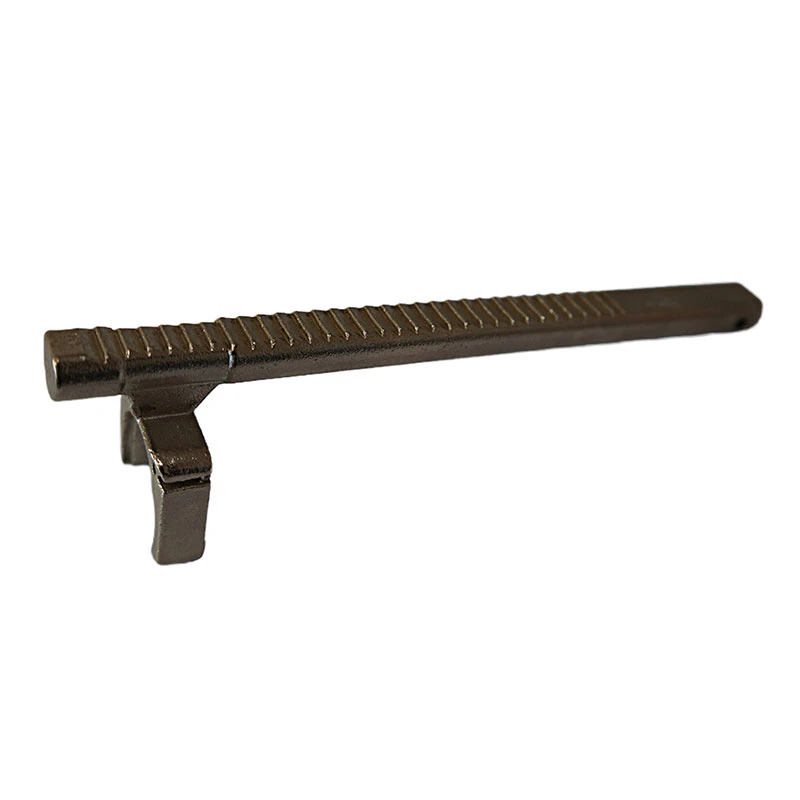cylinder block sand casting
Cylinder Block Sand Casting An Overview
Cylinder blocks are fundamental components in internal combustion engines, providing the structure for housing engine cylinders, coolant passages, and oil channels. The manufacture of cylinder blocks typically involves various casting techniques, with sand casting being one of the most prevalent due to its versatility, cost-effectiveness, and ability to produce complex geometries. This article explores the process of sand casting cylinder blocks, its advantages, challenges, and advancements in technologies.
The Sand Casting Process
The sand casting process involves several steps that transform molten metal into a finished cylinder block. The first step is to create the pattern, which is often made of metal, wood, or plastic. The pattern is a replica of the final cylinder block, with allowances for shrinkage and machining. In the case of cylinder blocks, patterns are typically large and intricate, often made with multiple parts to accommodate complex shapes and features.
Once the pattern is prepared, it is used to create a mold. Sand mixed with a binder is packed around the pattern to form the mold. The sand's properties, such as grain size and moisture content, are crucial; they dictate the strength and stability of the mold during the pouring process. After the sand is packed, the pattern is removed, creating a cavity that mirrors the shape of the cylinder block.
Next, molten metal, usually aluminum or iron, is poured into the mold cavity through a system of gates and runners. The choice of metal is significant; aluminum offers a lightweight yet strong option, while cast iron provides durability and longevity. Cooling time depends on the metal's properties and the thickness of the casting.
Once the metal has solidified, the mold is broken apart to reveal the casting. This is followed by several finishing processes, which may include trimming excess material, machining surfaces for precision fittings, and inspecting for any defects.
Advantages of Sand Casting
Sand casting offers numerous advantages, making it a preferred choice for manufacturing cylinder blocks. One of the main benefits is its cost-effectiveness; the materials for sand casting are relatively inexpensive, and the process can be easily scaled for production. Additionally, sand molds can be reused, further reducing costs associated with material waste.
The flexibility of the sand casting process also allows for the creation of intricate designs and geometries that may be difficult or impossible to achieve with other manufacturing methods. This adaptability is essential for producing engine components with specific cooling passages and other features required for optimal performance.
cylinder block sand casting

Moreover, sand casting can accommodate a variety of metal alloys, allowing manufacturers to choose materials that best fit the performance specifications of the engine.
Challenges in Sand Casting
Despite its advantages, sand casting does have challenges. One issue is the potential for defects, such as air pockets or inclusions, that can compromise the integrity of the casting. Maintaining proper mold integrity and controlling the pouring temperature are crucial in minimizing these defects.
Another challenge is the environmental impact of sand casting. The process generates sand waste and involves consumables that can be harmful if not disposed of properly. Manufacturers are increasingly focused on developing more sustainable practices, including recycling spent sand and improving the efficiency of the casting process.
Advances in Technology
Recent advancements in technology have improved the sand casting process. Innovations in computer-aided design (CAD) allow for more precise patterns and molds, reducing lead times and enhancing design complexity. Additionally, the incorporation of 3D printing technology has opened new avenues for creating mold patterns, streamlining production processes, and reducing waste.
The introduction of simulation software assists in predicting casting behavior and identifying potential issues before physical production, leading to higher-quality outcomes. These technological advancements ensure that sand casting remains relevant in modern manufacturing and continues to meet the demands of the automotive industry.
Conclusion
Cylinder block sand casting is a vital process in the production of engine components, blending traditional techniques with modern advancements. While it faces challenges, the benefits of sand casting—such as cost-effectiveness and design flexibility—ensure its continued use in manufacturing. By embracing new technologies, the sand casting industry is poised to enhance quality and efficiency, further solidifying its role in the automotive sector. As engines evolve and demand for performance increases, sand casting will adapt to provide reliable technology for the future.
-
OEM Sand Cast Pump Valve Fittings - Baoding Hairun | Precision Engineering, CustomizableNewsJul.30,2025
-
OEM Sand Cast Pump Valve Fittings - Baoding Hairun Machinery And Equipment Trading Co., Ltd.NewsJul.30,2025
-
OEM Sand Cast Pump Valve Fittings - Baoding Hairun Machinery And Equipment Trading Co., Ltd.NewsJul.30,2025
-
OEM Sand Cast Pump Valve Fittings - Baoding Hairun Machinery|Precision Engineering&Fluid ControlNewsJul.30,2025
-
OEM Sand Cast Pump Valve Fittings - Baoding Hairun Machinery And Equipment Trading Co., Ltd.NewsJul.30,2025
-
OEM Sand Cast Pump Valve Fittings-Baoding Hairun Machinery And Equipment Trading Co., Ltd.NewsJul.30,2025















